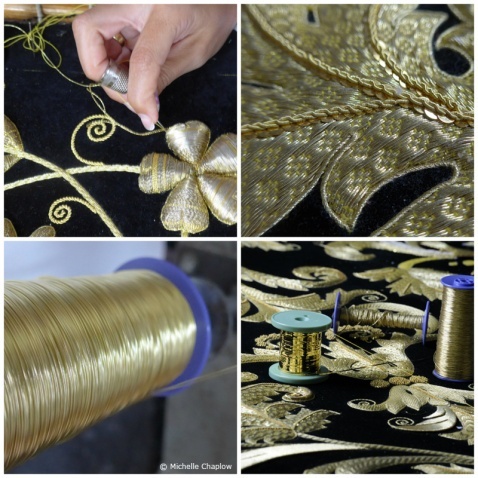
Pure gold embroidery is indeed a work of art. (click to enlarge photography ) © Michelle Chaplow |
|
Home | Dressing the Virgins | Couture | Process | See it
GOLD Embroidery - page 4 - how the embroidery process works
by Fiona Flores Watson
The lion´s share of projects in Francisco's workshop are the vestments for devotional statues, long-term projects commissioned by hermandades (church brotherhoods) which must be exhaustively worked on, section by section, whether creating a new piece of art, or restoring one - on the latter, he doesn't try to emulate the original embellishments when producing his own creations, so it's clear which parts are new, and which are old.
Francisco explains the process: first of all, he designs the manto, keeping the original pattern (they're rolled up and decoratively displayed in his workshop entrance area) and using a photocopy to work from. Then each element of the embroidery is cut out in yellow felt, to mark where it will go on the velvet. The position of the long, narrow stalks linking the design are marked with yellow thread, then these pieces are created using string encased in gold.
Once each piece has been made - using one of a number of stitching techniques in gold thread (silk covered with gold), according to how matt or shiny it will be - it is put into place, and carefully sewn on. After this, it is outlined with gold thread, and any extra details such as sequins are added. The larger pieces have stuffing inserted under them, to give the three-dimensional effect, while flat pieces are called cartulina. Hojilla tejida is the shiniest effect, with resplendent flat gold thread which gleams brilliantly in the light.